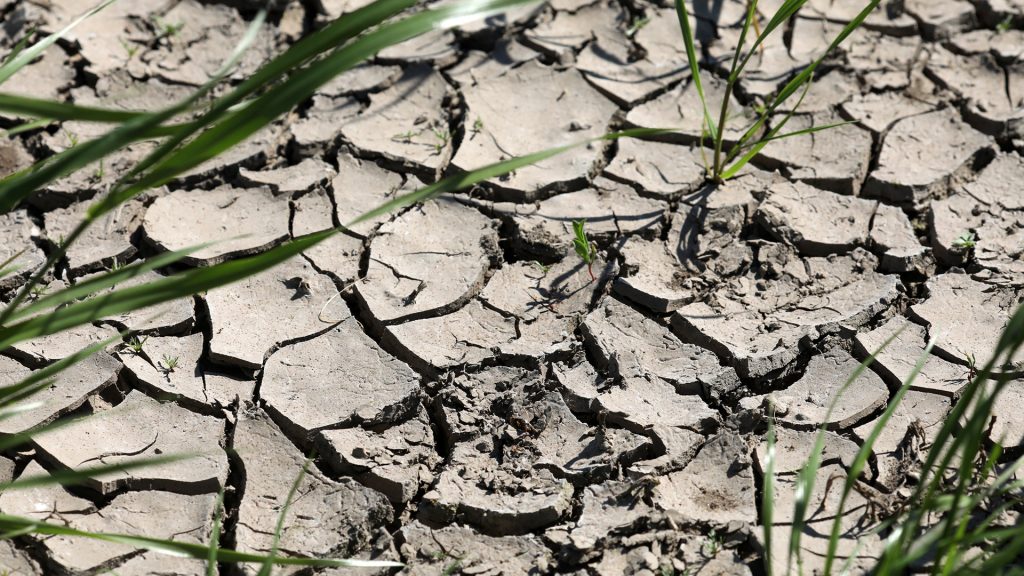As of 03/15/2022 4:27 PM
Germany is still blessed with plenty of water. This is taken for granted. But the new data shows that the water loss is significant – and that the extent is not yet expected.
You can see some things better from above. Jay Famiglietti, director of the Global Institute for Water Security at the University of Saskatoon, Canada, is evaluating data from the Grace satellites on behalf of NASA and the German Aerospace Center. And his results – you can hear it – make him anxious. “Let’s put it frankly: Germany has lost water the size of Lake Constance in 20 years. That’s an unimaginable amount of water.”
For nearly 20 years, the Grace satellites have been measuring changes in Earth’s gravity, which are caused by different water content, for example, roughly even today. “Evaluation of the data shows us the negative trend,” says Famiglietti. “The average water loss in Germany is about 2.5 gigatons or cubic kilometers per year. This makes it one of the most water-losed regions in the world.”
Less water everywhere in Germany
A scary discovery. Famiglietti only establishes the facts, and does not guess about the reasons. But other analyzes show that climate change is at the fore. On the other hand, higher temperatures lead to more evaporation, and on the other hand, more water simply flows out during heavy rain events and does not even reach the groundwater bodies.
ARD #Miyahuna Theme Day: Documentation “until the last drop”
Thomas Reuters / Danny Harrish, SWR, Daily News 12:00 noon, March 16, 2022
While the data from the Grace satellites has a relatively poor grid — their results are presented in squares of 150 kilometers on one side — one can nonetheless see some regional differences, Famiglietti explains. “And if you look closely, you can see that there is a particularly high level of receding water in the area around Lüneburg, as well as in the southwest, in Baden-Württemberg, and in the southeast, in Bavaria.” However, the red color throughout Germany almost, and that means less water all around.
High consumption by agriculture and private households
This presents a particular problem in periods of severe drought. The effects were already noticeable last summer: during long droughts – as in the summer of 2018 – there were already regional problems with the public water supply. In the fields the plants withered and In the forest the trees suffered greatly.
Agriculture is the culprit and the victim at the same time. In their plight, farmers seek their salvation in more and more watering. But private homes also fight drought with plenty of water, even if it only causes the grass to dry out.
#Water: Associated Science Project
A small stream in the city or a small forest at home already contains little water, unlike ten years ago, sometimes the drops dry up completely in the summer? These observations are of interest to aquatic ecologist Hans-Jürgen Hahn from the University of Koblenz-Landau: “The idea is to actually get an overview of how drought is affecting the region, especially on a very small scale.”
accompany them ARD#Miyahuna has worked scientifically and invites people all over Germany to participate in bridging the gaps between official spaces. The more people participated and filled out a simple online form, the more important the interactive map in which the reports were recorded. Online form You will find here.
Hydrologists call for precautionary measures
These problems still occur in odd years or in odd locations. But hydrologist Professor Martin Grambo, chief water economist at the Bavarian Ministry of Environment, cautions in light of the data from Grace’s mission: “There are things we haven’t published yet, but unfortunately they all support this picture… that we have a systemic deficit in the end. And the disturbing thing about it is that it It goes well for a long time, and when it becomes noticeable, it is too late.”
So hydrologists are calling for precautions now. New catchment areas must be protected. And larger supply networks can ensure that increasingly scarce water resources continue to be available everywhere decades from now. But while supplies have become more scarce, water consumption has risen again in recent years.

“Total coffee aficionado. Travel buff. Music ninja. Bacon nerd. Beeraholic.”







More Stories
Researchers detect extremely high-energy gamma rays
Anxiety disorders in old age increase the risk of dementia
Researchers are particularly fascinated by these exoplanets.